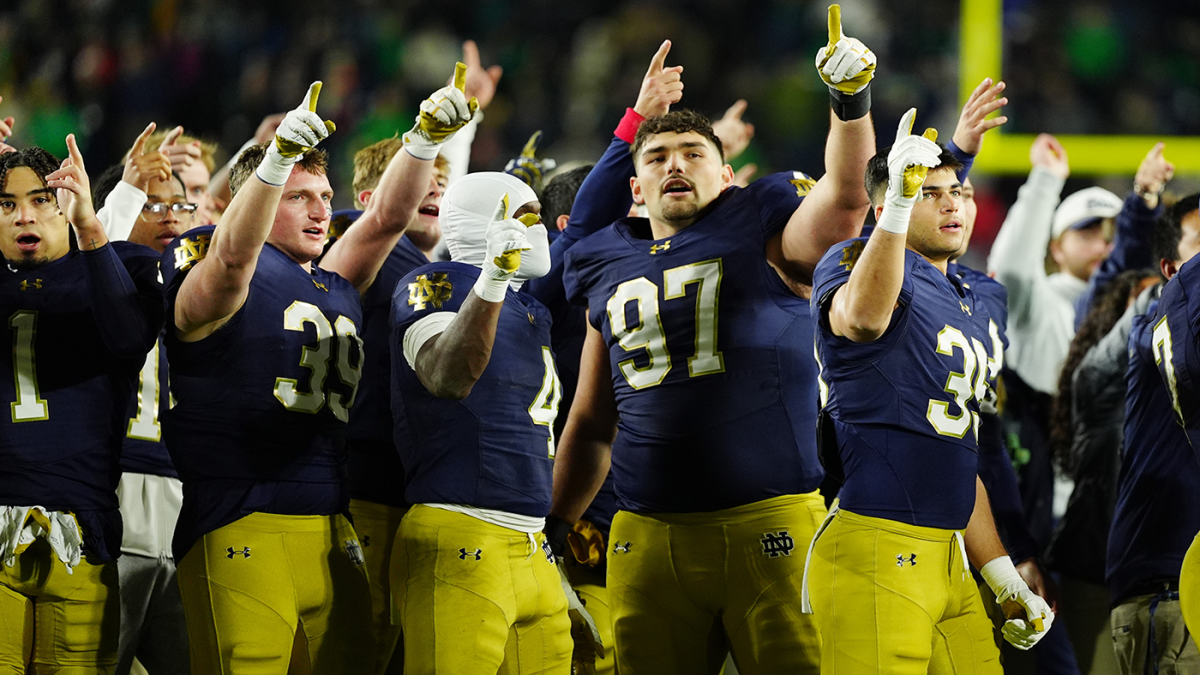


The College Football Playoff Selection Committee will probably spend a lot of time this week sorting through the two-loss SEC teams, of which there are now five following Georgia’s win over Tennessee in Week 12.
The Bulldogs’ win eliminates a lot of the head-to-head criteria among that group. Alabama, Georgia and Tennessee are now 1-1 against each other. Ole Miss still has a head-to-head result over the Bulldogs; however, the Rebels will not play any of the other two-loss teams.
So, my prediction here is that strength of schedule will rule the day, which is how I have listed them in the rankings. I have them all together, although it is possible that other teams could mingle in among them.
One team that could drop into that pile is BYU, which took its first loss of the season at home to Kansas. I have felt that the committee has not thought very highly of the Cougars thus far, always leaving them at the bottom of the list of undefeated teams despite a better schedule and more quality wins than Indiana. But the Hoosiers have style points, and that is not unimportant. We will finally learn something about the Hoosiers this week when they face Ohio State.
Note that if these predicted rankings were used to make a bracket, No. 13 Boise State would get a bye because it is the fourth highest-ranked conference champion, just ahead of ACC leader SMU, which would automatically qualify for the field as the fifth highest-ranked conference champion.
Before we get going, here are some of the things they consider besides a team’s record:
Thankfully, the committee’s definition of “ranked opponents” is different than the one you are used to hearing. The rankings they use for that standard are the previous week’s CFP Rankings. They don’t use rankings at the time the game was played from their own rankings or any other poll.
In fact, the committee specifically forbids the use of any poll that has a preseason starting point, which excludes the AP Top 25 and Coaches’ polls. Not only do they not try to mimic those polls, they do not even use them.
Trying to sort out strength of schedule is going to be more of a chore for the committee than in the past. Oh, sure, they will have a SOS metric to use, but getting into the details may cause some headaches. Now that the four major conferences each have 16 or more teams, you have teams playing widely diverse schedules, in terms of strength, within the conference.
In the Big Ten, 12 weeks into the season, Indiana only has one game on its schedule against a team that is currently bowl eligible — Ohio State this weekend. After playing Big Ten East schedules for all those years, the Hoosiers were probably due for a break. Meanwhile, Purdue has already played three teams likely to be ranked in this week’s top five and has one more coming, which is Indiana. The Boilermakers also played Illinois, which could end up in the final top 25 and a nonconference game against top 10-ranked Notre Dame.
Notice also that “game control” is not listed in the official criteria. It never has been, but that term comes out of the mouth of the committee chairman pretty regularly when talking about why a team is ranked where it is. Even if the chairman is not using that term specifically, he finds other ways to describe it. I was able to ask about that at the CFP mock selection exercise in 2021, and I was met with blank stares as if they had never heard of it.
Also, while scoring margin is not specifically a factor, the committee likes dominance. That is also a demonstration of game control, I suppose.
In the end, this is a subjective process guided by some objective data. There are 13 committee members and each may value the data points differently than their colleagues.
In the new 12-team format, the top five conference champions in the rankings are automatically in the playoff with the top four of those getting byes. The top seven remaining teams in the rankings will be at-large teams in the CFP. The current conference leaders are noted with an asterisk with the rankings breaking ties.
With all that in mind, here is what I think the rankings would look like this week. It is top heavy with SEC and Big Ten teams, but that is just where the power is in college football. Get used to it, because the gap will more likely get bigger over time.
References to “rankings” refer to last week’s CFP Rankings. It is the only one the committee uses when looking at performance against ranked teams, which is not necessarily a huge factor. If a team has enough of those games, it will be reflected in the strength of schedule.
Note: This projection is based only on results to this point. It does not reflect the final forecast for the playoff. The complete bowl playoff and bowl projections through the end of the season can be found here.
First five out (alphabetical order): Duke, Iowa State, Louisville (19), Pittsburgh, Washington State (18)